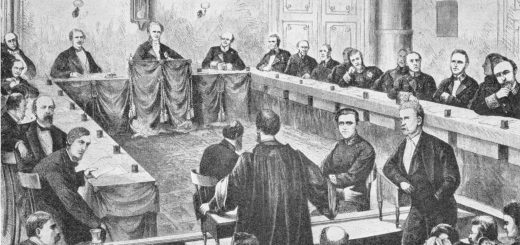Low Threshold for Crown’s Duty to Consult and Accommodate Aboriginal rights in Brokenhead Ojibway First Nation v. Canada
Canada recognizes and affirms existing Aboriginal and treaty rights in section 35(1) of the Constitution Act, 1982. The SCC, following this constitutional recognition, devised a jurisprudential regime setting out standards for defining, identifying and violating Aboriginal rights. This regime incorporates the duty to consult and accommodate Aboriginal rights. The SCC in Haida Nation v. British Columbia (Minister of Forests), 2004 SCC 73, and Taku River Tlingit First Nation v. British Columbia (Project Assessment Director), 2004 SCC 74, ruled that the Crown has a duty to consult Aboriginal peoples and to accommodate their concerns even before Aboriginal title claims have been decided.
According to the SCC, the scope and extent of this duty depends on the circumstances of the case, giving courts judicial discretion over the outcome. The SCC set out basic guidelines, but referred to emerging and developing case law to define the precise duties that arise in different situations. Further clarification with regard to the extent of the duty and the role of third parties is required for this process.
In Brokenhead Ojibway First Nation v. Canada (Attorney General), 2009 FC 484, the Federal Court has once again entered the murky waters surrounding the Crown’s duty to consult Aboriginal peoples. When the federal Crown considers a pipeline project, it will inevitably have a significant impact on Aboriginal rights. However, the concern that arose in this claim was whether project-specific regulatory and environmental review processes like National Energy Board (NEB) are able to fulfill Crown’s duty to consult.
The Federal Court supported the regulatory processes and rejected the claimants’ argument that the regulatory process could not properly address unresolved claims. It denied the three applications for judicial review of the decisions by the Governor in Council (GIC) to approve NEB authorizations for the construction of pipelines in southern Manitoba.
Background
The claim was brought by Treaty One First Nations, a group of seven First Nations. They are successors to the Ojibway First Nations who signed the treaty with the federal Crown in 1871. The Treaty One First Nations assert treaty-protected rights and indigenous cultural rights in Southern Manitoba.
The three pipelines projects at issue were the Keystone Pipeline Project, the Southern Lights Pipeline Project and the Alberta Clipper Pipeline Expansion Project. The NEB and federal Cabinet approved all three 1000-kilometre long underground pipelines from Alberta to Manitoba that involved the use of land in southern Manitoba for pipeline construction by the respondents. They consulted with Treaty One First Nations to mitigate project-specific concerns. However, they ignored repeated letters from the group to meet for consultation on the impact of the three projects on the outstanding treaty claims.
The issues before the court were: whether the pipeline projects “had a sufficient impact on the interests of the Treaty One First Nations such that a duty to consult on the part of the Crown was engaged”; the content of that duty; and “whether and to what extent the duty may be fulfilled by the NEB acting essentially as a surrogate for the Crown.”
Keystone Pipeline Project
The Keystone Pipeline Project is a 1,235-kilometre pipeline from Alberta to Manitoba on the Canada-United States border. Of the 1,235 kilometres, 258 kilometres run over existing rights of way. Prior to approval, NEB looked at the project’s impact on Aboriginal people. It concluded that the impact would be minimal and it was satisfied that the Aboriginal people “were provided with an opportunity to participate fully in its process and to bring to the Board’s attention all their concerns.” All parties were provided “with a forum in which they could receive further information, were able to question and challenge the evidence put forward by the parties, and present their own views and concerns with respect to the Keystone Project.” The NEB noted that almost all of the land that would be impacted by the project was previously disturbed, privately owned and used primarily for ranching and agricultural purposes. Based on this recommendation, on November 22nd, the GIC authorized the construction and operation of the Keystone Project.
Southern Lights Pipeline Project and the Alberta Clipper Pipeline Expansion Project
The Alberta Clipper Project is 1078-kilometre long pipeline from Alberta and ending at the Canada-United States border near Manitoba. The Southern Lights Project uses the same corridor. Both are constructed to run along existing rights of way over private and previously disturbed land. NEB noted that “they were not aware of any potential impacts on Aboriginal interests that had not been identified.” If any interests were identified, then “they would meet with the Aboriginal organization and community to jointly develop a course of action.” The NEB concluded that the impact to Aboriginal interests would be “minimal” and would be “appropriately mitigated” through ongoing consultation with the Aboriginal people throughout the planning process. On May 22nd, the projects were authorized by GIC.
Analysis
Standard of Review
Following the principles laid out in Haida Nation v. British Columbia (Minister of Forests), 2004 SCC 73, the court determined that the existence and content of the duty to consult and accommodate is a question of law, reviewable on the standard of correctness. The question of whether the Crown discharged this duty to consult and accommodate is reviewable on the standard of reasonableness.
Generality of Evidence
The court found that the Treaty One First Nations’ attempts to consult and discuss their concerns regarding the pipeline projects with the Crown had been ignored. Letters “were never answered even to the extent of a simple acknowledgment”. However, the fundamental problem with the Treaty One First Nations’ claim, as defined by the courts, was that “the evidence to support them was expressed in generalities.” The evidence failed “to identify any interference with a specific or tangible interest that was not capable of being resolved within the regulatory process.” Because the evidence clearly showed that the pipelines were being constructed on land that was privately owned and previously disturbed, the three pipelines would have negligible, if any, impact upon Treaty One First Nations land claims. Once buried, the court found it reasonable to conclude that this pipeline would have a minimal impact on the surrounding environment.
Low Threshold for Duty to Consult
The courts looked for precedents in Haida, Taku River, and Ka’a’Gee Tu First Nation v. Canada (Attorney General), 2007 FC 763, for the scope and content of the duty to consult. They concluded that the Crown met its low threshold of duty to consult in this case.
The court noted specifically that the Treaty One First Nations have a credible land claim. But the impact of the pipelines upon those claims was found to be minimal because the pipelines are underground and unobtrusive. The courts found no evidence
“to prove that the Pipeline Projects would be likely to interfere with traditional Aboriginal land use or would represent a meaningful interference with the future settlement of outstanding land claims in southern Manitoba. To the extent that any duty to consult was engaged, it was fulfilled by the notices that were provided to the Treaty One First Nations and to other Aboriginal communities in the context of the NEB proceedings and by the opportunities that were afforded there for consultation and accommodation.”
The court rejected the Treaty One First Nations argument for a Crown consultation process separate from the NEB process. It found that the Treaty One First Nations’ need for a separate “overarching consultation” process was a “repetitive and essentially pointless exercise.” However, it acknowledged that separate consultation may be required where the concerns of the Treaty One First Nations cannot be dealt with properly within the current NEB framework.
It is important to note that the court assumed that the available regulatory processes are “accessible, adequate and provide Treaty One First Nations an opportunity to participate in a meaningful way”, which in itself is debatable.
The court was “satisfied that the process of consultation and accommodation employed by the NEB was sufficient to address the specific concerns of Aboriginal communities potentially affected by the Pipeline Projects including the Treaty One First Nations.” The court shifted the blame towards the Treaty One First Nations for not availing themselves fully of the opportunity to be heard before the NEB. Foregoing this opportunity was not reason enough to justify the demand for a separate or discrete consultation with the Crown:
“To the extent that regulatory procedures are readily accessible to Aboriginal communities to address their concerns about development projects like these, there is a responsibility to use them. First Nations cannot complain about a failure by the Crown to consult where they have failed to avail themselves of reasonable avenues for seeking relief. That is so because the consultation process is reciprocal and cannot be frustrated by the refusal of either party to meet or participate.”
Implications
The decision affirms that Crown owes a duty to consult with Aboriginal communities whose interests may be impacted but that regulatory processes may satisfy that duty. The threshold to satisfy the duty is therefore low, as it amounts to no more than an obligation to give notice. Although this is not a SCC decision, it has the potential to set a new, lower benchmark in determining the duty of consultation. This lower threshold, however, will not prevail in cases involving greater potential impact on Aboriginal claims and interests.
The court has deemed it unnecessary to create any new processes for consultation and has shifted the burden to the Aboriginal people to take affirmative action to avail themselves of existing consultation processes. If Aboriginal groups do not address their concerns with the regulatory bodies, then there is a chance that they might lose an opportunity to bring a claim against the bodies for an unfavorable decision.
Another important implication is that regulatory bodies now have the authority to address Aboriginal matters even in the absence of specific language in the legislation. The court has unofficially handed the title of “surrogate of the Crown” to the NEB with regard to consultation. The court found no fundamental problem with the process. The court has essentially endorsed regulatory bodies and their decision-making authority.
Perhaps it is time to look at alternative means of resolving this dispute where duty to consult can no longer survive and provide the necessary resolution for the Aboriginal rights. The current process is considered adversarial and imbalanced. A more harmonized, joint decision-making process that involves clear negotiations with the Treaty One First Nations might have better, less conflicted results. If a decision cannot be reached, the matter should be sent to mediation or an independent tribunal consisting of both First Nation and Crown representatives. Litigation is an unfavourable alternative for Aboriginal, Crown and all other parties involved. A balance of power negotiations and mediations conducted in good faith might be a better alternative.








Join the conversation